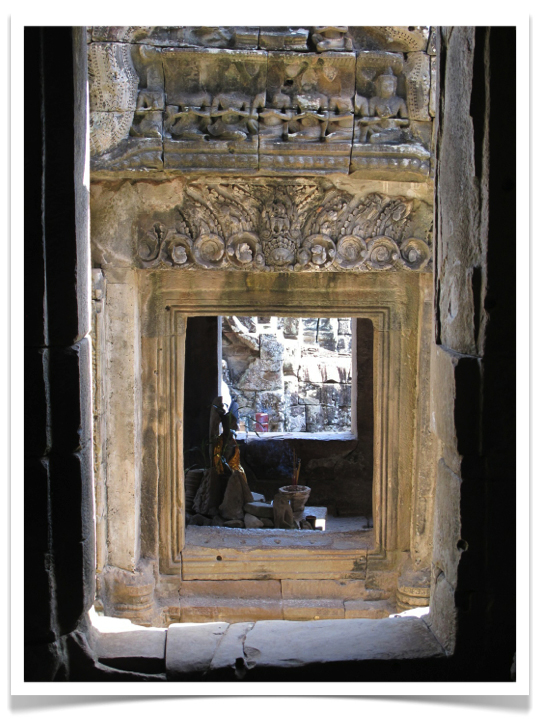
The temple of Bayon in the Angkor Thom complex was built by Buddhist King Jayavarman VII in the late 12th century. The temple feature 54 towers decorated with enormous, smiling faces of Avalokiteshvara, the Bodhisattva of Compassion.

There are a total of 216 faces of Avalokiteshvara at Bayon, and at least a dozen of them are visible at any time as you walk through the ruins. Unlike the more typical representations of the Bodhisattva of Compassion (see Avalokiteshvara and Quan Âm), the faces at Bayon look - understandably - very much like Jayavarman VII himself.
 Monday, June 10, 2013 at 9:15AM
Monday, June 10, 2013 at 9:15AM 






